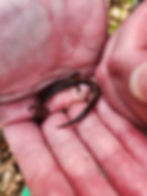Comden-Towle Model Forest
CLOSED to ALL HUNTING!




The Comden-Towle Model Forest was established as an outdoor laboratory where people can enjoy a picnic or hike over two miles of trails.
This diverse forest includes mature stands of hardwood and pine, along with wetlands, ponds, and native grass prairie. Come visit in the spring and summer to see a diverse display of native wildflowers.
Forest Rules
-
Stay on the trails
-
No off-road vehicles
-
No littering
-
Keep campfires in the fire pit
-
Make sure campfire is out when you leave
Activities
-
Campfires
-
Day Hikes
-
Field Trips
-
Geocaching
-
Lantern Walks
-
Picnics
-
Snowshoeing & Cross Country Skiing
-
Workshops & Other Events

The Comden-Towle Model Forest is environmentally verified through the Michigan Agriculture Environmental Assurance Program (MAEAP). This specific system is the Forest, Wetland, and Habitat (FWH) system, which is designed to prevent contamination of groundwater and surface water resources by maintaining your forest and wetlands habitat.

Potential vernal pools have been spotted in the Model Forest!
Vernal pools are naturally occurring, temporary ponds that hold water for at least two months but dry out every year or every few years. They are small, shallow and isolated from permanent bodies of water. Although fishless, Michigan vernal pools tend to have wood frogs, spotted salamanders, blue spotted salamanders and/or fairy shrimp. The presence of these indicator species can help determine whether the body of water in question is or is not a vernal pool.
Vernal pools play an important role in maintaining healthy ecosystems by providing vital habitat for a wide variety of species as well as improved flood control, erosion control and recycling of nutrients. Vernal pools are sensitive habitats housing species that are easily disturbed, so please be respectful and proceed with caution if you come across a vernal pool.

One of the vernal pools located in the Model Forest.

Wood frog found in a vernal pool in the Model Forest.

Eastern red backed salamander found in a vernal pool in the Model Forest.

One of the vernal pools located in the Model Forest.
New Housing Construction in the Model Forest!
Fairy Village

Six fairies have moved into the trees around our pavilion! Can you find them all?
Bat House

Bat houses mimic the tight space between bark and tree trunk to attract residents.
Insect Hotel

Insect hotels attract residents by simulating their natural nesting habitat: hollow stems, brush piles, and tree cavities.
Why attract bats?
Bats are crucial to maintaining a balanced ecosystem. They are superstar pest controllers, feeding on large quantities of flying, nocturnal insects such as mosquitoes, moths and beetles. Little brown bats, for example, can eat up to 1000 mosquitoes per hour! Bats significantly reduce insect pest populations and save farmers over $1 billion per year in pesticide and crop damage costs.
Why attract insects?
Insects are also crucial when it comes to maintaining a healthy, balanced ecosystem. Some insects consume pests, helping to keep pest populations low. Others might be decomposers, aiding in soil nutrient cycling. Additionally, many insects are pollinators, keeping the habitat alive by helping plants reproduce.
Directions
From Greenville: Take M-91 north to Kendaville Rd. then head east for four miles and south for one mile.
From Stanton: Take M-66 north 4.5 miles to Coral Rd. and then head west for five miles.
3556 N Hillman Rd. Lakeview, MI 48850
43°20'39.0"N 85°11'00.9"W
